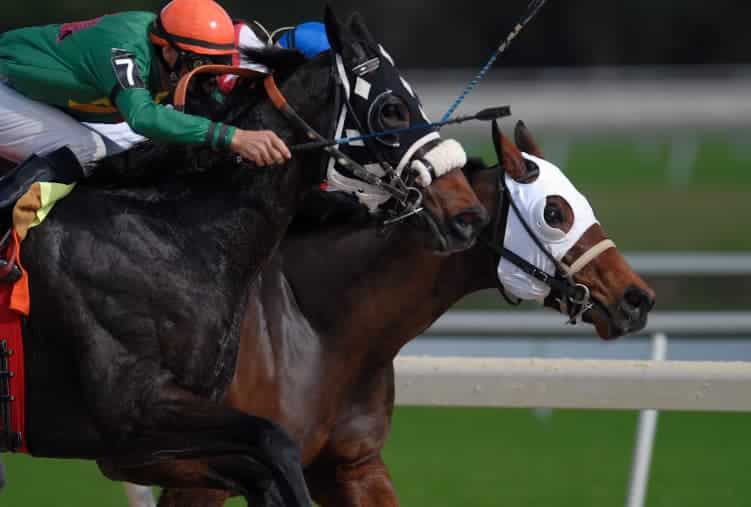Best Sports Betting Strategies for 2025
Betting strategies are plans of action that are designed to help you bet in a structured and predictable way. No strategy can guarantee success, but many can be very useful. In this guide, we introduce you to a variety of strategies that can be applied to a wide range of sports. We also provide some specific strategies for football, tennis and horse racing.
Why Use Betting Strategies?
Several different types of betting strategies are used by online sports bettors. Some are designed to help you identify what outcomes might be worth betting on. Others will tell you how much you should bet. And still others will help you to increase your chances of winning. But despite this variety, all betting strategies offer some common benefits. Here are the main ones:
Strategies Encourage Consistency
Betting strategies don’t allow you to bet according to how you happen to be feeling at the time. Instead, they will either tell you to take action in a specific way or to refrain from taking any action at all. This helps to remove some of the uncertainty of sports betting and enables you to bet more consistently.Strategies are Easy to Assess
Because you bet consistently with a predetermined strategy, it’s easy to monitor and assess the results you get from it. If you find a strategy to be useful, you can keep doing the same thing for as long as that usefulness continues. In other words, if you start winning with a strategy, you can continue betting in that particular way and – hopefully – continue winning.Strategies are Adaptable
Many betting strategies can easily be adapted to a wide variety of sports and markets. As you’ll see later in this guide, some of the most popular sports betting strategies were initially created by and for people playing casino games. Yet they also work just as well in the sporting arena.
General Betting Strategies
The general betting strategies described below can be potentially useful no matter what sport you like to bet on. If you aren’t already doing so, we would strongly advise you to start using the first – Money Management – without delay. This is the best betting strategy that we can recommend to anyone. As for the rest, you can consider adopting whichever appeals to you the most.
1 – Money Management
One reason why most casual bettors lose money is that they don’t think about the best way to use their funds. They might bet £5 on a football game one day and win, then risk £20 on another game the next day and lose, and so on. There’s no predetermined plan of action concerning how much money they wager, and sooner or later they end up having modest stakes on their winning bets and bigger stakes on their losing bets.
By adopting a Money Management strategy you can avoid betting in such an inconsistent way. Start by setting aside a sum of cash that you intend only to use for betting purposes. This is referred to as your bankroll. It should be a sum of money that you can easily afford to lose in a worst-case scenario.
When you have established your bankroll, make it a rule to stake a fixed percentage of the bankroll balance on each bet you place. How big a percentage you bet is up to you, but we’d advise no more than 5%. If you’re risk averse, you could bet just 1% of the bankroll per bet.
By betting a percentage of the available bankroll, if the bankroll grows because you’re backing winners, your stakes will also start to increase. Conversely, if you have some losing bets and your bankroll shrinks, so will your stakes.
2 – Value Betting Strategy
The second strategy that we consider essential for all bettors is Value Betting. This means betting only when you consider the available odds to be more generous than your assessment of an event suggests.
For example, let’s imagine that you’re considering betting on a tennis match. You’ve studied the past form of both players and you think that they are equally matched, with a 50/50 chance of winning. In that case, a perfectly fair betting market would quote odds of 1/1 about each.
You then take a look at the odds available and you see that Player A is priced at 8/13 and Player B at 6/5. In that case, Player B would be the value bet, as he’s available at greater odds than the 1/1 you would have priced him up at yourself.
The idea behind value betting is that, by consistently betting at odds that are greater than you think they should be, you should make a profit over the long term. Of course, whether or not that happens will depend on how accurate your estimates of the probabilities are. This is something that can improve over time as you develop knowledge and experience. For a deeper discussion of this subject, see our dedicated Value Betting page.
3 – Risk-Free Betting Strategy
Take a look at our roundup of the best betting sites in the UK and you’ll see that several of the bookmakers featured offer risk-free bet deals to new customers. These allow you to make a bet with your own money, and will then refund part or all of your stake if your bet loses. The refund will normally be given as a free bet and subject to a maximum value, but it’s still very useful.
An increasingly popular betting strategy is to take advantage of such risk-free bets with two or more bookmakers at the same time. For example, in a Goals Over/Under market for a football match, you might be quoted the following:
Over Under 2.5 19/20 17/20 In this scenario, you could place a risk-free bet on Over with one bookie, and a risk-free bet on Under with another bookie. One of the two bets is sure to win, and the other will give you a full or partial refund in the form of free bets. That basically guarantees you a good result no matter what happens.
There aren’t unlimited risk-free bets available, so you won’t be able to get rich with this strategy. Even so, risk-free betting could prove very useful in helping you to grow your bankroll in the early days.
4 – Hedging Strategy
Hedge betting is the act of making a secondary bet in the same market as your main bet. The purpose of this is to try and reduce or eliminate your losses if a clear danger wins instead. For example, consider the following odds for a football match between West Ham and Bournemouth:
1 X 2 13/10 14/5 7/4 Here you might think that West Ham should win the match, so you could bet £10 on the home win at odds of 13/10. You could then place a hedge bet of £4 on the draw. By taking this hedge betting approach, you’ve spent a total of £14, but you’ve also ensured the following:
- If West Ham wins, your £10 bet will win at 13/10, giving you a total return of £23. That gives you an overall profit of £9.
- If the match results in a Draw, your £4 bet will win at 14/5, giving you a total return of £15.20. That gives you an overall profit of £1.20.
Hedge betting isn’t suitable for every market, as the available odds need to be large enough to make it viable. In situations like the above, however, it can be very useful.
5 - Dutching Strategy
The Dutching strategy is most commonly used by those who like to bet on horse racing, although it can also be applied to other sports. It is designed to increase your chances of picking a winner. To do that, you bet on two or more runners instead of just one. As with hedging, whether it’s viable to dutch a race will depend on the odds available.
To use this betting system, you first need to look at a race and decide which two or three horses you think have the best chance of winning. You then need to look at the odds of those horses to check that you can bet on them. The simplest approach is to make sure that the smallest odds are bigger than the number of horses you want to bet on.
For example, let’s say that you want to bet on the first, second, and third favourites in a competitive handicap. Those horses are priced at 7/2, 4/1 and 9/2, respectively. In this scenario, you could bet £5 on each for a total outlay of £15. And here’s what you’d get back if one of them wins:
Odds of Winner Return Overall Profit 7/2 £22.50 £7.50 4/1 £25.00 £10.00 9/2 £27.50 £12.50 While this is the simplest way of using a Dutching strategy, it can be made more effective by adjusting your stake on each selection according to the odds on offer. That would enable you to get the same return no matter which one wins.
In the above example, staking £5.52 on the 7/2 shot, £4.97 on the 4/1 shot and £4.52 on the 9/2 shot (total outlay of £15.01) would give you a return of £24.83 and an overall profit of £9.82 whichever one passes the post first. And if you’re wondering how on earth you can figure out such precise stakes, the answer is by using a Dutching calculator.
6 - Arbitrage Betting Strategy
You could think of the arbitrage betting strategy as being similar to Dutching but taken to the extreme. The aim here is to bet on every possible outcome in an event so that you make a profit no matter what happens. It sounds too good to be true, we know, but while arbitrage opportunities can be a challenge to find, they are out there.
Most people who use the arbitrage betting strategy effectively do so by focusing on events with just two or three outcomes and betting with different bookmakers. For example, here’s how two bookmakers with two different views about the same tennis match might price up the players:
Player A Player B Bookmaker 1 11/10 4/6 Bookmaker 2 4/6 11/10 In this case, you could bet £10 on Player A with Bookmaker 1 and £10 on PLayer B with Bookmaker 2. That would be a total outlay of £20 and you’d get £21 back no matter which player wins, which is a profit of 5% on outlay.
Even in this theoretical example, you can see that profit margins in arbitrage betting tend to be very slim. That, along with the fact that you’ll need to work hard to find such opportunities, tends to put many people off looking for them. But if you like the idea of arbitrage betting, which is one of the only betting systems that work every time, this is a strategy you might want to pursue.
7 - The Small Fry Snowball Strategy
Landing a winning bet at odds of 1/10 or 1/5 is nothing to get very excited about, but if you could compound a series of such wins together your eventual payout would snowball into something much more substantial. Hence the name of the Small Fry Snowball strategy.
Here you make an initial bet on a short-priced favourite (1/5 or less) which has the best form in the event. Then, when that bet wins (which we all hope it will) you reinvest your total return on the next similar selection. You repeat this process until you have twice your initial investment, and then you continue with the rest until you think it sensible to stop and start over.
For example, if you were to bet £10 on your first selection at odds of 1/5, you’d get a return of £12 if it wins. Do the same again and you’ll get back £14.40. Continue in that manner at odds of 1/5 and after five winners you will get a return of £20.74. You could then take out your initial £10 and continue with the rest.
The more risk-averse among you might then want to take out additional small sums as the bet snowballs. Or you could just let things ride in the hope of winning a lot more - a sequence of 10 winning bets of 1/5 would turn £10 into £61.92. But if you take the latter approach, remember that the whole bet will go down as soon as get a selection that loses.
8 - Second to Odds-On Strategy
Don’t like the idea of backing odds-on shots? Then one of the best betting systems for you might be the Second to Odds-On betting strategy. As the name suggests, this approach requires you to bet on the second favourite when the clear market favourite is odds-on.
Of course, there’s a bit more to it than that. What you need to look for are odds-on shots that don’t have the form to back up their market position. At the same time, the second favourite must have the best-proven form in the event.
For example, there might be a ‘talking horse’ that hasn’t yet run a single race but has been installed as the market favourite just because it’s being sent out by a top stable. The second favourite, on the other hand, might have three races under its belt and was only just pipped at the post last time out. In that case, the second favourite might be well worth betting on.
The logic behind this betting strategy is two-fold: 1) The second favourite has proven form. 2) It is probably being offered at bigger odds than it ought to be due to the unproven odds-on favourite. That could well make it a serious value bet.
9 - Permed Parlay Strategy
Parlay bets - also referred to as accumulators - involve betting on several different events. If all of your events result as predicted, the bet wins. The odds for each of your selections will be multiplied together to determine your payout, and this can lead to substantial wins. For example, a £10 accumulator with five selections, each priced at 1/1, would pay you £320 for a £310 profit.
The problem with parlay bets is that you need all of your selections to win or the whole bet goes down. And that’s where the Permed Parlay betting strategy comes in handy. The idea here is to divide your intended outlay between two or slightly different parlays so that you can cover what you consider to be the most likely upsets.
For example, let’s imagine that you want to bet on five football matches that you expect to be home wins. You’re confident about all of them, but you think the fourth or fifth match could upset you with a draw. In that case, you might play three parlays, like this:
Parlay 1 Parlay 2 Parlay 3 Match 1 1 1 1 Match 2 1 1 1 Match 3 1 1 1 Match 4 1 1 X Match 5 1 X 1 This would give you a winning parlay even if one of your bottom two matches were to end up as a draw. And if you wanted to add a fourth parlay bet to cover both of the bottom matches as draws, you can easily do that.
Pools bettors will recognise what we’re doing here as permutation betting, which means covering more possibilities to increase our overall chances of winning. An upset in any of the first three matches will still let us down, but we’ve got a much better run for our money than we would with a non-permed parlay.
Of all sports betting strategies, this is one of the most flexible. You can apply it to horse racing, greyhound racing, a tennis parlay - anything you like. You won’t make as much profit when winning with a permed parlay as you would with a regular one (because the other parlay bets will lose) but you’re likely to land a winner more often.
Progressive Staking Strategies
The next batch of staking strategies worth knowing about are progressive staking strategies. These are also known as staking plans, and they aim to achieve a profit over a series of bets by following a predetermined progression.
1 – The Martingale Strategy
Perhaps the most famous of staking strategies is the Martingale betting system. This was invented in the 18th century to help gamblers make an overall profit on even money shots. It was quickly applied by casino patrons playing the game of roulette, which has several outcomes that occur close to 50% of the time, including Red, Black, Odd, Even, and so on.
The idea here is simple. You bet 1 unit on your first bet. If it wins, you start again. However, if your first bet loses, you double your stake for the next bet. Another loser would require you to double your stake again for the next bet. And you would continue in this manner until a winner crops up. Assuming that you bet on outcomes that pay 1/1, the eventual winner would recoup all of your previous losses and leave 1 unit left over as your profit.
Unfortunately, this isn’t the license to print money that many new bettors imagine. And that’s because stakes increase rapidly when you encounter a losing run. Bet £1 on your first selection and if you hit five losers in a row you’d need to stake £32 on the sixth selection to make a profit of just £1. Another loser would require £64 on the next selection, and £128 on the eighth.
This is clearly unsustainable, so if you’re interested in this strategy we’d suggest limiting yourself to three losing bets in a row before starting over. That would still lose you 7 units, but at least it wouldn’t ruin you financially.
2 – Paroli Staking Strategy
While the Martingale strategy doubles stakes after losing bets, the Paroli staking strategy doubles them after winning bets. The aim here is to achieve three wins in a row, at which point you start over. Again, this strategy assumes that you are betting at odds of 1/1 on outcomes that have a roughly 50% chance of occurring.
You begin this strategy by betting 1 unit on your first selection. If it loses, you take the loss on the chin and start over. If it wins, you bet 2 units on your second selection. Again, a loss would force you to start over. But if the second bet wins, you’d bet 4 units on the third bet. Whatever happens then, you would start over.
This still isn’t a perfect strategy, because you really do need three winners in a row to show an overall profit. And if you ever get alternating winners and losers you won’t benefit from that pattern at all. We’re only describing the Paroli strategy here because it’s one that many bettors talk about as if it’s a magic key to riches, and that isn’t the case by any stretch of the imagination.
3 – The Fibonacci Staking Strategy
This staking strategy is based on the Fibonacci series of numbers as described here at the BBC Science Focus site. The series begins with 1 and the next number in the series is the sum of the previous two numbers. It therefore starts with 1, 1, 2, 3, 5, 8, 13, 21, 34 and continues in the same manner.
The idea here is to follow the Fibonacci series to determine your stakes. If you get a loser, you continue to stake the next number in the series. If you get a winner, you take two steps back down the sequence and continue. For example, if you have five losers in a row, your stake on the next bet would be 8 units. If that bet wins, your next stake would be 3 units.
In theory, if you follow this strategy betting at odds of 1/1, you will eventually break even and recover all previous losses. In practice, this strategy can be just as dangerous as the Martingale, and a long losing run would see your stake increase quite sharply.
Quite why this has become a popular staking strategy for sports betting is a mystery. As with the Martingale, if you want to try this strategy for yourself we would suggest limiting your losing runs to three before starting over.
4 – Cover to Win
The last progressive staking strategy we want to mention here is the Cover to Win. This is a little different because it doesn’t require you to bet on outcomes at odds of 1/1. Instead, you can use it to bet at any odds.
You start by setting yourself a profit target. Let’s say 1 unit. You then calculate how much you would need to stake on your first bet to win 1 unit at the odds available. If the bet loses, you add your previous losses to the target and calculate your stake for the next bet, and so on. When you hit a winner, you will have achieved your profit target and can start over.
For example, let’s say that you want to bet on favourites at a certain horse racing meeting. The favourite in the first race is on the board at 1/1, so you’d bet 1 unit in the hope of making a 1 unit profit. If that horse loses, you’d add the 1 unit loss to your 1 unit target, which gives you 2 units to aim for. The next favourite is offered at odds of 2/1, so you would bet 1 unit again. If it wins, you’ve recouped your losses and have a profit of 1 unit left over. If it loses, you would now be aiming for 2 units of previous losses plus the original 1 unit target, which is 3 units. And so on.
We think that this is a much more sensible progressive staking strategy than those that blindly and rapidly escalate stakes. However, it still isn’t perfect. Your stakes will increase during any losing run, and if you bet on short odds they will increase rapidly. Again, consider limiting your losing runs to three or four if you want to take this approach.
Sport-Specific Strategies
We now come to look at a few betting strategies that are specific to certain sports. We’ll provide you with a fairly simple strategy for each of three popular sports so that you can start keeping an eye on them right away.
Football Betting Strategy
There are plenty of football betting strategies in the world, but this is one of the most rational and useful. It is designed to help you predict the most likely outcome of a football match based on recent current-season performance.
➡️First, take the total number of goals that the home team has scored in each of its last six home games and divide by six. This gives you an average number of goals scored per home game.
➡️Next, take the total number of goals that the away team has scored in each of its last six away games and divide by six. This gives you an average number of goals scored per away game.
Now compare the two averages. If the average of one team is two or more goals greater than the average of the other, you might want to consider betting on them. You can consider narrower margins, but a two-goal margin or greater will help you win football bets more often.
Horse Racing Betting Strategy
Again, there is no shortage of horse racing betting strategies that we could mention here. But we’ve picked this one for its simplicity. It uses the nap selections of newspaper tipsters to identify those that are agreed on by several tipsters.
To use this horse racing system, look at the nap selections of as many newspaper tipsters as you can. The Racing Post provides a handy compilation table of newspaper naps that’s very useful. If any horse has been napped by two or more tipsters, consider it a selection to bet on. Should you wish to reduce the number of selections provided, only consider horses that have been napped by three or more tipsters. If you would like no more than one selection per day, focus on the horse that has been napped the most overall.
Tennis Betting Strategy
Perhaps the easiest of tennis betting strategies is the one we’re about to describe to you. But don’t underestimate its usefulness. It focuses on Grand Slam tournaments, and we dare you to find an easier approach to picking winners.
The day before a Grand Slam tournament is scheduled to begin, visit three or four of your favourite sports betting sites and look at the betting market for the tournament winner. In most Grand Slams you’ll see that the same player is quoted as the clear favourite.
Now make that player your selection. Start by making a 1 unit bet on him or her to win the tournament outright. Then, when the tournament begins, bet on the same player to win each of their matches in turn. In many cases, your selected player will go all the way to the final and then win. In some cases, they may lose partway through proceedings, but you’ll have a good chance of covering your tournament win stake before that happens. Of course, they could also lose in their very first match, but that is fortunately quite rare at this level of the game.
Ian BruceAnother approach here could be to use the Paroli Staking Strategy on your match-by-match bets. It’s quite common for Grand Slam favourites to win at least their first three matches, and you could stop betting at that point or revert to using level stakes for subsequent matches.
Pros and Cons of Betting Strategies
By now you will understand that betting strategies come in a variety of forms. So what are the pros and cons of using them in your daily sports betting hobby? Here are some of the main points that we think all bettors should bear in mind:
Advantages of Betting Strategies
✅They can give structure to your betting activities. Depending on the betting strategy being used, this could be to guide the way you bet, how much you bet, or - in the case of a sports betting strategy - what you bet on.
✅Betting strategies take much of the guesswork out of betting. Each strategy has its own rules, and if you follow the rules you’ll bet much more consistently than you would otherwise.
✅You can often tweak betting strategies to make them better suited to your own needs and preferences. For example, we tweaked the Paroli strategy earlier for the specific purpose of using it on Grand Slam favourites.
Potential Disadvantages of Betting Strategies
⚠️Using a betting strategy might give you the idea that you aren’t fully responsible for your own betting decisions. But you are. Blindly following a strategy is never a good approach to betting, and you can’t use ‘But the strategy said!’ to excuse poor decision-making,
⚠️Some betting strategies are beautiful in theory, but dangerous in practice. Take the Martingale, for example. Mathematically speaking, it will always win. But you might need a six- or seven-figure bankroll - and a bookmaker willing to take ridiculously massive bets - to achieve the 1 unit profit that it promises.
⚠️Betting strategies aren’t shortcuts to success. Most of the strategies discussed here will still require you to make your own selections and to win often enough to make them work. If you don’t pick winners, no betting strategy will help you much.
Start Betting Strategically
The best way to appreciate the benefits of betting strategies is to start using one or two of them. We’d advise all bettors to adopt a sound Money Management strategy and to also keep the strategy of Value Betting in mind wherever possible. Keep strict records of your wagers and the results gained from any strategy that you adopt so that you can see what works best for you, and good luck with your bets.
FAQ
What is the most profitable live betting strategy?
All other things considered, perhaps the most profitable strategy for live markets would be value betting. Odds change rapidly in live betting markets, and if you can get bigger odds for an outcome than its probability suggests fair, you should do well over the long term.
What are the best gambling strategies?
This is a tricky question to answer, but the best gambling strategies are probably those that enable you to make modest gains consistently. For example, by betting on seeded favourites to beat unseeded underdogs in tennis matches.
What is the safest betting strategy?
Arbitrage Betting is widely considered to be the safest betting strategy around, as you’ll win a small percentage of your total outlay whenever you use it. Unfortunately, finding good opportunities for this strategy can take significant amounts of time and effort.
What is the easiest betting strategy?
Identify the clear favourite to win a Grand Slam tournament and bet on them winning their first-round match. You won’t find it easy getting value odds in this situation, but you’ll win far more often than you lose.
Ian Bruce joined Safest Betting Sites in 2024 as Senior Sports Editor to oversee the quality and usefulness of its gambling content. He originally developed an interest in betting after landing a winning Yankee on his first attempt. He then spent years figuring out how to replicate that success. Along the way, he became one of the UK’s leading writers on the topic of betting and gaming. Ian’s career has now spanned more than three decades, and his enthusiasm for systematic and responsible betting hasn’t waned one bit. However, his preferred approach to winning these days is Dutching, for the simple reason that “It’s a lot easier than landing Yankees.”
Latest Sign-Up Offers
9.522/04/249.505/04/249.715/04/249.522/03/249.502/04/24








